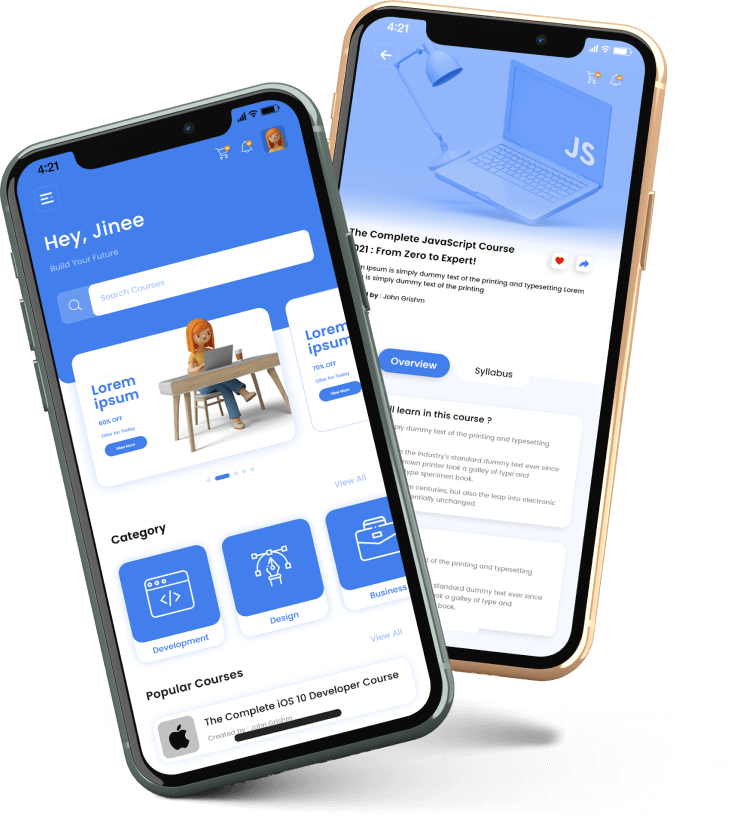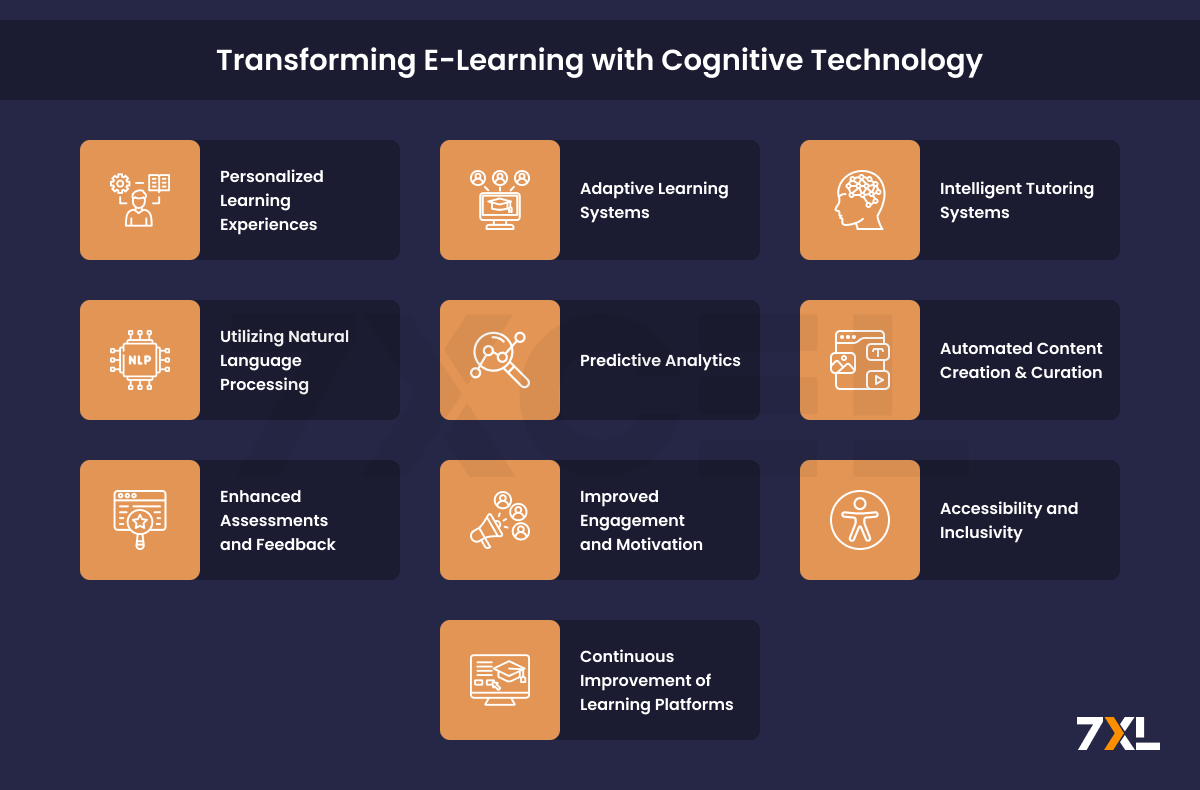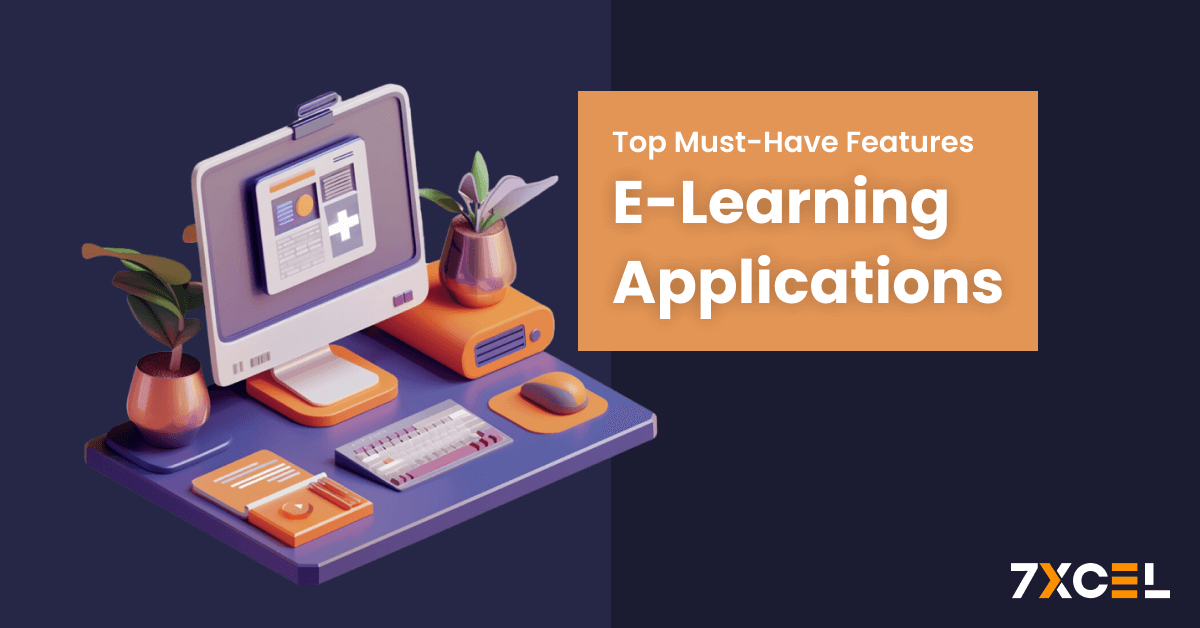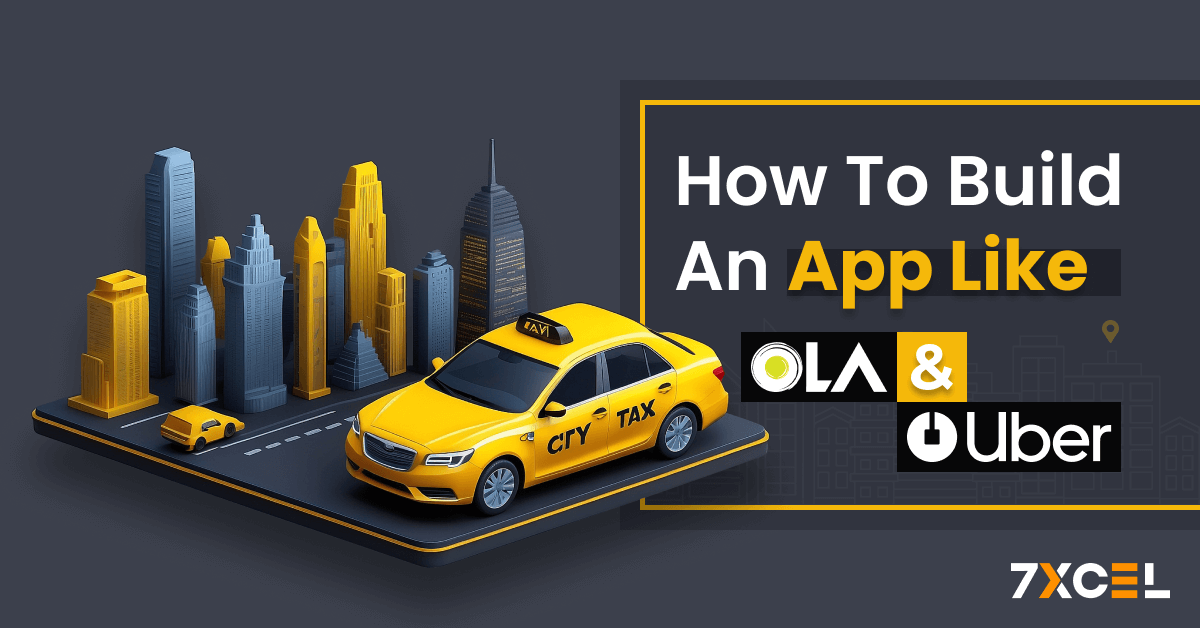Quick Summary:
The widespread availability of e-learning programs has caused a substantial shift in the way that education is traditionally approached. These platforms are not only reshaping the way we learn but also democratizing access to education globally. It’s critical that e-learning programs have specific features of eLearning apps to improve user experience and efficacy.
In this blog, we’re going to discuss📝
The e-learning sector has seen significant growth, driven by technological advancements and the increasing demand for flexible education, especially post-pandemic. To succeed in this competitive market, e-learning platforms must prioritize user experience, engagement, and adaptability. Key features include a user-friendly interface, multimedia content, personalization, gamification, social learning, offline access, and analytics.
Integrating cognitive technologies, such as AI-powered personalization and natural language processing, can revolutionize learning by providing personalized and efficient experiences. Developing cost-effective e-learning app solutions is essential, ensuring platforms are versatile, accessible globally, and continuously updated to meet evolving learner needs.
Key Features of On-Demand E-learning Applications
For on-demand e-learning apps to thrive in the fiercely competitive e-learning industry, they need to have an extensive feature set that meets the varied needs of today’s learners. Here are the key features of eLearning apps that every successful e-learning business should include:

1. User-Friendly Interface
A user-friendly interface is crucial for keeping learners engaged and minimizing frustration. In order to facilitate user navigation, the platform has a simple and straightforward design. Positive user experiences are enhanced by elements like intuitive menus, sensible content structure, and simple directions. For instance, a well-designed dashboard can provide an overview of courses, upcoming deadlines, and recent activity.
Cognitive technology can aid in this by analyzing user interactions and preferences to continually optimize the interface for better usability. For example, AI can track which features of eLearning apps are most used and which are neglected, adjusting the layout and navigation accordingly.
2. Multimedia Content
Diverse learning styles are accommodated and the subject is kept interesting through the use of multimedia elements including animations, interactive quizzes, films, and simulations. For instance, complex concepts can be broken down into easy-to-understand animations, while videos can provide real-world context to theoretical knowledge. Interactive simulations allow learners to practice skills in a risk-free environment.
Natural language processing is one way that cognitive technology can improve multimedia content, making it more dynamic and responsive. For example, an AI-driven virtual tutor could answer questions posed by students in real-time or guide them through complex simulations.
3. Mobile Compatibility
With the widespread use of smartphones and tablets, ensuring that e-learning platforms are mobile-compatible is essential. This means designing responsive interfaces that work seamlessly across different devices and screen sizes. The ability for learners to access resources while on the go through mobile compatibility enhances the adaptability and accessibility of the learning experience.
Cognitive tech can further enhance mobile learning by adapting content formats and layouts based on device usage patterns. For instance, an AI might adjust video quality based on internet speed or suggest offline downloads for users in areas with poor connectivity.
4. Personalized Learning Paths
Personalized learning paths tailor the educational experience to each individual’s needs. By leveraging machine learning algorithms, e-learning platforms can analyze a learner’s progress, strengths, and areas for improvement. This data-driven approach allows the platform to recommend specific resources, adjust the difficulty level of tasks, and create a customized learning journey.
For example, if a student struggles with a particular topic, the system can suggest additional practice exercises or alternative explanations. This personalization ensures that learners stay motivated and engaged by working at their own pace and focusing on their unique needs.
5. Adaptive Assessments
Adaptive assessments are designed to adjust their difficulty based on the learner’s performance in real-time. This means that if a learner answers a question correctly, the following questions become progressively harder, and vice versa. Adaptive assessments provide a more accurate measure of a learner’s abilities and knowledge gaps.
For example, a math assessment might start with basic problems and quickly move to advanced ones if the learner demonstrates proficiency. Cognitive technologies enable these dynamic adjustments, ensuring that assessments remain challenging but not overwhelming, thus providing a more personalized and effective evaluation.
6. Social Learning Features
Social learning features include integration with social media platforms, discussion forums, and collaborative tools. These features encourage interaction among learners, fostering a sense of community and collaboration. Group projects, peer reviews, and online study groups are examples of how social learning can be implemented.
Cognitive technologies can facilitate these interactions by recommending study groups or discussion topics based on shared interests and learning goals. For example, an AI could match students working on similar projects or struggling with the same topics, enabling them to support each other.
7. Gamification Elements
Gamification involves incorporating game-like elements such as badges, leader boards, and rewards into the learning process. These components provide a playful and competitive element that may inspire students to interact more fully with the material. For example, earning badges for completing modules or appearing on a leader board for high quiz scores can incentivize learners to achieve their goals.
Cognitive technologies can tailor these gamification elements to individual preferences, enhancing their effectiveness. For instance, an AI might recognize that a particular learner is motivated by competition and therefore emphasize leader board rankings.
8. Real-Time Progress Tracking
Real-time progress tracking allows learners to see their performance metrics, such as completion rates, quiz scores, and time spent on various modules. This transparency helps learners stay motivated and accountable by providing immediate feedback on their progress. It also allows educators to monitor student performance and intervene when necessary.
Cognitive technologies can analyze this data to offer insights and recommendations for further improvement. For example, an AI could alert a student who is falling behind and suggest a tailored study plan to catch up.
9. Accessibility Features
E-learning applications should be inclusive, catering to users with disabilities by adhering to accessibility standards. It offers features such as screen reader compatibility, captioned videos, and adjustable font sizes. Ensuring accessibility means that all learners, regardless of their physical or cognitive abilities, can benefit from the educational content.
Cognitive technologies can assist in making content more accessible by providing real-time translations, voice commands, and other assistive features. For example, AI can generate captions for video content on the fly or convert text into speech for visually impaired learners.
10. Data Security and Privacy
Protecting user data is paramount in e-learning applications. Robust security compliance with data privacy regulations (like GDPR) and the use of robust security mechanisms like encryption and secure authentication are crucial. Interaction with the platform is encouraged for users more freely when data security and privacy are upheld.
Cognitive technologies can enhance security by detecting and responding to potential threats in real-time, ensuring a safe learning environment. AI-powered security systems, for example, are able to keep an eye out for anomalous activity that could point to a breach and react quickly to safeguard user information.

Planning to Develop an eLearning App?
Build you competing eLearning app with 7xcel- faster, easier,& with the features that keep learners engaged.
Transforming E-Learning with Cognitive Technology
The e-learning industry is rapidly evolving, driven by cognitive technologies like AI, machine learning, and natural language processing. These advanced technologies enable personalized, engaging, and effective learning experiences that meet diverse learner needs.
By partnering with an experienced eLearning app development company, platforms can seamlessly integrate cognitive features such as adaptive learning algorithms, intelligent content recommendations, and interactive tools, creating a more tailored and immersive educational experience. Here’s how cognitive technology is revolutionizing the e-learning industry:

1. Personalized Learning Experiences
Cognitive technology can analyze vast amounts of data to understand each learner’s unique needs, preferences, and learning styles. By doing so, it can create personalized learning paths that adapt to the learner’s progress and performance.
For example, AI algorithms can recommend specific resources, adjust the difficulty level of tasks, and suggest additional practice exercises based on the learner’s strengths and weaknesses. This level of personalization ensures that learners stay motivated and engaged, ultimately leading to better learning outcomes.
2. Adaptive Learning Systems
Adaptive learning systems use cognitive technology to provide customized educational experiences. These systems dynamically adjust the content and assessments based on the learner’s interactions and performance. For example, the system can offer tailored help, such more explanations or practice problems, if a student is having trouble with a certain subject.
Conversely, if a student excels, the system can present more challenging material. This adaptive approach ensures that learners are appropriately challenged and supported throughout their educational journey.
3. Intelligent Tutoring Systems
Intelligent tutoring systems (ITS) leverage AI to simulate one-on-one tutoring experiences. These systems can provide personalized feedback, answer questions, and guide learners through complex concepts in real-time. For example, an ITS can help a student solve a math problem by breaking it down into smaller, manageable steps and offering hints when the student encounters difficulties. This level of individualized attention mimics the benefits of human tutoring, making learning more effective and accessible.
4. Natural Language Processing (NLP)
NLP enables e-learning platforms to understand and respond to human language, making interactions more natural and intuitive. For example, NLP can be used to develop chatbots that answer students’ questions, provide explanations, and offer feedback on assignments. Additionally, NLP can facilitate language learning by providing real-time translations, pronunciation guides, and interactive language exercises. This technology enhances communication between learners and the platform, creating a more engaging and supportive learning environment.
5. Predictive Analytics
Predictive analytics uses cognitive technology to analyze data and make predictions about future learning outcomes. E-learning platforms can use this technology to identify at-risk students and intervene early to provide the necessary support. For instance, predictive models can analyze patterns in student performance and engagement to forecast which learners are likely to struggle with upcoming content. Educators can then use these insights to offer personalized support, such as additional resources or one-on-one tutoring, to help these students succeed.
6. Automated Content Creation and Curation
Cognitive technology can automate the creation and curation of educational content, making it easier to develop high-quality learning materials. For example, AI algorithms can generate quizzes, summarize articles, and create interactive simulations based on existing content.
Additionally, machine learning can be used to curate personalized learning playlists, recommending relevant videos, articles, and exercises based on the learner’s interests and progress. This automation not only saves time for educators but also ensures that learners have access to a diverse range of high-quality resources.
7. Enhanced Assessments and Feedback
Cognitive technology can revolutionize the assessment process by providing more accurate and timely feedback. For example, AI-powered tools can grade assignments, analyze written responses, and provide detailed feedback on areas for improvement.
Additionally, cognitive technology can enable more sophisticated assessments, such as simulations and scenario-based evaluations that provide a deeper understanding of the learner’s skills and knowledge. This enhanced feedback helps learners understand their progress and identify areas for improvement.
8. Improved Engagement and Motivation
Gamification elements powered by cognitive technology can enhance engagement and motivation in e-learning. For example, AI can tailor gamification elements, such as badges, leaderboards, and rewards, to individual preferences, making the learning experience more enjoyable and motivating.
Additionally, cognitive technology can analyze engagement patterns to identify which activities and content are most effective at keeping learners motivated, allowing for continuous improvement of the e-learning platform.
9. Accessibility and Inclusivity
Cognitive technology can make e-learning more accessible and inclusive for learners with disabilities. For example, AI can provide real-time captions for videos, convert text to speech for visually impaired learners, and offer translations for non-native speakers.
Additionally, cognitive technology can develop personalized accessibility features, such as customizable font sizes and color schemes, to meet the unique needs of each learner. This ensures that all students, regardless of their physical or cognitive abilities, can benefit from the educational content.
10. Continuous Improvement of Learning Platforms
Because it offers insightful data on user behavior and learning outcomes, cognitive technology helps e-learning platforms to be continuously improved. In order to suggest changes to the content and user experience, machine learning algorithms, for instance, might examine data on how users engage with the platform, spot patterns and trends.
A data-driven strategy ensures e-learning platforms continuously adapt to learners’ changing needs, offering superior learning opportunities.
Conclusion
Cognitive technology is transforming the e-learning industry by providing personalized, adaptive, and engaging learning experiences. By leveraging AI, machine learning, and natural language processing, e-learning platforms can better meet diverse learner needs.
As technologies advance, the future of e-learning promises more effective, inclusive, and accessible educational experiences worldwide. The integration of cognitive technology into e-learning not only enhances the learning process but also ensures that education is more personalized, engaging, and impactful.








